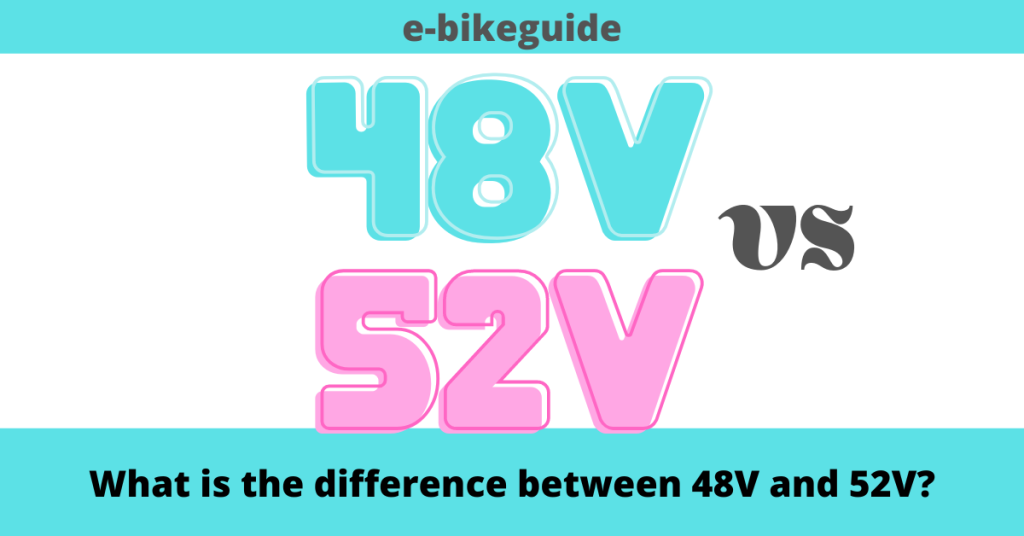Everything you need to know about the e-bike battery

There are many different types and sizes of e-bike batteries, but they all have one thing in common: they store energy that can be used to power an electric motor. E-bike batteries are usually made of lithium-ion, a type of battery that is lightweight and long-lasting.
The battery is the heart of an e-bike, and it is what makes it possible for the bike to move under its power. Most e-bike batteries are located in the frame of the bike, beneath the seat. The battery is typically attached to the frame with a battery bracket, and it is connected to the bike’s electric motor with wires.
E-bike batteries come in a variety of shapes and sizes, but they all serve the same purpose: to power an electric motor. The most common type of e-bike battery is the lithium-ion battery, which is lightweight and long-lasting. Other types of batteries used for e-bikes include lead-acid, nickel-cadmium, and nickel-metal-hydride batteries.
E-bike batteries typically have a capacity of between 10 and 1000 watt-hours (Wh). The capacity of the battery determines how long the battery will last before it needs to be recharged. A battery with a higher capacity will last longer between charges, but it will also be heavier and more expensive.
The average e-bike will have a range of 20-30 miles on a single charge, but this varies depending on the type of battery, the capacity of the battery, the terrain, and the rider’s weight. E-bikes with lead-acid batteries tend to have shorter ranges, while e-bikes with lithium-ion batteries can go further on a single charge.
When choosing an e-bike battery, it is important to consider the type of bike you will be using it on, the type of terrain you will be riding on, and your riding style. With so many different types of e-bike batteries available, there is sure to be one that is perfect for you.
Choosing an e-bike battery

There are a few things to consider when choosing an e-bike battery. The most important things to consider are voltage, capacity, and weight.
The voltage of the battery will determine how much power the motor will have. A higher voltage battery will result in a more powerful motor. However, a higher voltage battery will also be heavier and more expensive.
The capacity of the battery will determine how long the e-bike will be able to run on a single charge. A larger capacity battery will allow the e-bike to run for a longer period, but it will also be more expensive and heavier.
The weight of the battery is an important consideration, as a heavier battery will make the e-bike more difficult to ride.
52V battery vs 48V battery
There is a big difference between a 48V battery and a 52V battery when it comes to electric bikes. A 48V battery will typically provide enough power to ride for about an hour, while a 52V battery will last for two hours or more. This difference is due to the higher voltage of the 52V battery, which provides more power to the motor and allows the bike to go further on a single charge.
Why a 52V battery is better than a 48V battery

- Longer Range – Compared to the same 48V batteries Ah rating, 52V batteries will have a longer range because they have more battery capacity. (watt-hours)
- 52V batteries can deliver higher power, which the electrical motor when the engine wants it. Additionally, 52V batteries offer a greater voltage range for electrical motor operation compared to 48V batteries.
- More Efficient – 52V batteries allow your motor to run at a lower current draw (amps) when operating under the same conditions Equipped with a 48V battery This may facilitate a reduction in heat. built up in the engineas well as lessen overheating and early failure.
- More versatile – 52V batteries will provide better performance than 48V batteries when used in cold weather.
Why might you not need a 52V battery and a 48V battery might be enough?
- 48V can already give you more than enough range for your driving needs
- You don’t need any extra power for off-roading or climbing steep hills and just want to drive around town and commute.
- In the winter months, you do not plan to drive in colder temperatures or on snow.
52V battery summary

It is more efficient which means better performance. This is because a 52v e-bike battery provides higher efficiency using fewer amplifiers generating the same or better power for your bike. 52V e-bike battery provides higher motor speed than 48V. One of the most important differences concerns the range, the 52V e-bike battery offers a wider range than the 48V. A 52V battery pulled from the charger will produce almost 59V, while a 48V battery will produce around 54.5V.
Connection of battery voltage and engine operation
Note that the BBS02 and BBSHD Mid Drive motor drivers can have a voltage range of 40V to 59V, so these units perform better at the higher end of the range, but if the voltage drops, so will the performance.
As the battery drains and the voltage drops, The rider will notice they are no longer getting the same power from the motor, which will also be noticeable with throttle lag. This difference in performance compared to a 52V battery, will be more obvious with a 48V battery.
E-bike battery – Which is suitable for you?

The debate over which battery voltage is best for electric bicycles continues. Some manufacturers are now offering 52V battery options on their electric bicycles, while others remain committed to the 48V standard. The higher voltage of the 52V battery offers some advantages in terms of power and range. However, it also comes with some trade-offs. The main downside to the 52V battery is that it can put extra strain on the motor and other components, which could lead to premature failure. It is also important to note that 52V batteries are not compatible with all 48V chargers, so riders will need to be sure to get the right charger for their bike.
If you’re in the market for a new electric bike, you may be wondering what battery voltage is best for you. Make sure you research e-bike battery details before buying or selling.
48V e-bike batteries are great for those who want a bit more power than a 36V battery can offer. They don’t however need the extra power that a 60V battery provides. This makes them a great choice for those who want to ride on hilly terrain, or for anyone who wants a bit of a boost when riding. If you’re looking for an e-bike battery that will give you the most power possible, then you’ll want to opt for a 60V battery. This voltage is best suited for those who plan on doing a lot of riding, or for anyone who wants the absolute most power possible from their electric bike.
Battery Safety

E-bikes are becoming increasingly popular, but there is a hidden danger that many people are unaware of – the risk of e-bike battery explosions. Lithium-ion batteries are used in many e-bikes, and while they are generally safe, there have been several cases where they have exploded, causing serious injuries to the rider.
The cause of these explosions is not fully understood, but it is thought that a build-up of heat and pressure inside the battery can cause it to rupture. Riders are advised to be aware of the danger and to take precautions, such as carrying a fire extinguisher with them when riding.
E-bikes are a convenient and environmentally friendly way to get around, but riders need to be aware of the dangers that come with them. Lithium-ion batteries can explode if they overheat, so it is important to be aware of the signs of a problem and to take precautions.
Helpful e-bike battery tips

Electric bikes are becoming more popular, and with good reason. They’re environmentally friendly, they’re fun to ride, and they can save you money on transportation costs. But if you’re new to electric bikes, you might be wondering how to care for the battery. Here are some tips to help you get the most out of your e-bike battery.
- First, it’s important to keep your battery charged. You should charge it after every ride, and if possible, keep it plugged in when you’re not using the bike. This will help prolong the life of the battery.
- Second, avoid extreme temperatures. If it’s very hot or very cold outside, it’s best to store your bike indoors.
- Third, don’t let your battery way down. If you do, it could damage the battery and shorten its life. Try to keep it above 50% charged.
- Fourth, if you’re not using the bike for a while, it’s a good idea to disconnect the battery. This will prevent it from being overcharged or drained.
By following these tips, you can help ensure that your e-bike battery lasts for years to come.
Size, weight, and shape
These three things are considered when deciding which pack to buy. It needs to fit and not be too heavy and should look good when installed on the bike. You probably won’t find all the ideal factors in the pack, but some are vital while others are not so much.
The most common mistake many e-bikers make is wanting a huge battery, that’s all well and good until you have to figure out how to mount it on your e-bike, and then it gets worse when you need to carry it on the stairs or put it on a bike stand. Be realistic and you can save yourself a lot of headaches and money as well as end up with the best possible ride for your needs.
E-bike battery market

In addition to being cleaner, greener, and a viable short-distance transportation option, e-bikes have various applications in various industries around the world. Some travel agencies in Europe have introduced cycling tour packages that are popular with tourists and locales. As there are several tourist attractions in Europe, people visit this destination in large numbers.
The use of e-bikes is growing quite a bit because of urban areas in the United States, such as Boulder, Colorado, and Madison, Wisconsin. They are very bike-friendly urban areas. In addition, the federal highway spent $915.8 million on bicycle and pedestrian infrastructure. This appears to have affected the use of e-bikes in these areas. These factors have proven to be the biggest drivers for the global e-bike battery market.
Due to growing environmental concerns, people around the world are shifting to environmentally friendly modes of transportation. The depletion of fossil fuels at an alarming rate has paved the way for e-bikes to enter the market. Governments all over the world have introduced strict norms regarding carbon emissions. Hence the demand for these electric bikes is increasing globally.
In addition, e-bikes produce no carbon emissions, save space and guarantee great well-being. These advantages, therefore, make e-bikes a viable mode of transport for short distances (20-25 km). In any case, due to the COVID-19 pandemic, individuals are also choosing e-bikes for their long-distance travel needs. the market is counting on witnessing fresher models with further developed range and battery life.
Difference between 48V and 52V – conclusion

E-bikes or e-bikes are special bicycles that are equipped with a battery-powered auxiliary mode that provides electrical power when the rider wants it. The small motor will provide pedal assist to help you with extra power when going up hills. Some bikes also have a throttle that engages the engine with the push of a button. E-bike batteries provide energy for up to 70 miles per charge. Regular charging will be necessary. With continuous use, riders will also need to replace the battery when it wears down.
E-bikes usually come with a 48V or 52V battery. The difference between them is power and performance: the 52V battery provides better performance. A battery with a higher voltage provides greater efficiency, with the battery using less electricity. This is to provide the same or better performance for the bike. Battery life tends to be longer even with a 52V battery. Meanwhile, the previously popular 36V battery has fallen out of favor. This is because it doesn’t perform as well as the 48V or 52V batteries.
48V e-bike batteries are ideal for riders who want more power than a 36V battery. However, they do not require the extra power that a 60V battery gives. This makes them an excellent alternative for those who wish to ride on hilly terrain. It is also suitable for anyone who needs a little extra power when riding. If you’re searching for the maximum power from your e-bike battery, a 60V battery is a way to go.
A 52v e-bike battery generates the same or better power for your bike while using fewer amplifiers. A 52V e-bike battery has a faster motor than a 48V battery. One of the most major distinctions concerns the range, the 52V e-bike battery gives a longer range than the 48V. A 52V battery extracted from the charger produces about 59V, whereas a 48V cell produces around 54.5V. Make sure you analyze all these details carefully.
Extra facts

The batteries used in the e-bike are in a sealed unit, but they are not fully waterproof. The only manufacturer that can boast IP waterproofing is Specialized in IP67. IP stands for “Ingress Protection Degree”. IP67 is 100% dustproof and protects against the effects of temporary immersion between 15 cm and 1 m of water depth. Specialized e-bike batteries can withstand riding in the rain and occasional immersion in water, but we recommend avoiding this unless necessary.
